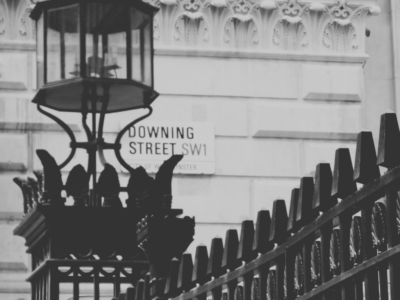Annual house price growth was broadly stable at -3.5% in June, little changed from the 3.4% decline recorded in May.
Prices were also fairly stable over the month, rising by a modest 0.1%, after taking account of seasonal effects, reversing the 0.1% decline seen in May. (Note that June is typically the strongest month in terms of seasonal price rises hence the change in the unadjusted cash price is larger than 0.1% in the table above.)
Longer term interest rates, which underpin mortgage pricing, have increased sharply in recent months, in response to data indicating that underlying inflation in the UK economy is not moderating as fast as expected, said Robert Gardner, Nationwide’s Chief Economist.
This has prompted investors to expect the Bank of England to increase its policy rate further and for it to remain higher for longer.
Longer term borrowing costs have risen to levels similar to those prevailing in the wake of the mini-Budget last year, but this has yet to have the same negative impact on sentiment.
For example, the number of mortgage applications has not yet declined and indicators of consumer confidence have continued to improve, though they remain below long run averages.
Higher interest rates impacting affordability
The sharp increase in borrowing costs is likely to exert a significant drag on housing market activity in the near term.
For example, for a representative first-time buyer earning the average wage and buying the typical property with a 20% deposit, mortgage payments as a share of take-home pay are now well above the long-run average.
Moreover, house prices remain high relative to earnings, and as a result, deposit requirements are still a significant barrier for those looking to enter the market, Gardner continued.
A 10% deposit on a typical first-time buyer home is equal to around 55% of gross annual income – this is down from the all-time highs of 59% prevailing in late 2022, but still marginally above the levels prevailing before the financial crisis struck in 2007/8.
Moreover, despite the higher interest rates available to savers, the sharp rise in rents, together with continued high rates of inflation more generally is continuing to make it difficult for many prospective buyers to save for a deposit.
Is a soft landing still possible?
Nevertheless, a relatively soft landing is still possible, providing the broader economy performs as we (and most other forecasters) expect, Gardner stated.
Labour market conditions are expected to remain relatively robust, with the unemployment rate remaining below 5%, while income growth is projected to remain solid.
With Bank Rate likely to peak in the quarters ahead, longer term interest rates should also start to fall back.
As a result, a combination of healthy rates of income growth and modest price declines should improve affordability over time, especially if mortgage rates moderate.
What about the impact of higher interest rates on those refinancing?
Although 85% of the stock of outstanding mortgages are on fixed interest rates, around 400,000 borrowers are due to refinance each quarter in the years ahead as their deals come to an end.
This equates to around 20% of the fixed rate mortgage stock refinancing by the end of 2023 and c.40% by the end of 2024.
For those coming off two-year fixed rate deals, with mortgage rates approaching 6%, a new two-year deal is around 425bps higher than their existing rate, which equates to an increase of £385 per month for a typical borrower (Assuming 75% LTV, 25-year term & average balance of £165,000).
Those coming off five-year deals face an increase of 350bps on a new five-year fix (assuming a rate of 5.5%), which equates to an increase of c.£315 per month for a typical mortgage borrower.
Clearly this represents a significant increase, but those borrowers were stress tested at interest rates above those now prevailing in the market to ensure they could cope with such an increase.
Moreover, incomes have been rising at a solid pace in recent years. Lenders will also work with borrowers to provide assistance wherever possible.
Therefore, providing the labour market and interest rates perform broadly as expected, we are unlikely to see the waves of forced selling which would probably be required to result in a more disorderly adjustment to the housing market.
All regions except Northern Ireland saw annual price falls
Northern Ireland saw a modest 0.7% year-on-year price rise, making it the best performing region. Meanwhile, East Anglia was the weakest performing region, with prices down 4.7% compared with a year ago.
All English regions saw a slowing in the annual rate of change compared with last quarter.
London saw a 4.3% year-on-year decline, while the surrounding Outer Metropolitan region saw a 2.9% fall.
Across northern England overall (which comprises North, North West, Yorkshire & The Humber, East Midlands and West Midlands), prices were down 2.7% compared with Q2 2022.
The North West was the weakest performing northern region, with prices down 4.1% year-on-year.
Meanwhile southern England (South West, Outer South East, Outer Metropolitan, London and East Anglia) saw a 3.8% decline.
Scotland saw a slight improvement in the annual rate of change to -1.5%, from -3.1% last quarter.
Meanwhile Wales saw a further slowing in annual house price growth from -0.7% to -1.7%, Gardner concluded.
Jeremy Leaf, north London estate agent and a former RICS residential chairman, comments:
“Nationwide provides a long-established and useful indicator of house price movements but this survey has its limitations.
It is restricted to the lender’s customers and quite dated so not yet giving sufficient weight to the impact of recent higher than expected increases in the cost of living and interest rates.
Encouragingly, mortgage applications have held up well, reflecting that needs-driven rather than discretionary buyers are still active.
We are finding they have a determination to move but recognising they now hold the balance of power.”
Mark Harris, chief executive of mortgage broker SPF Private Clients, comments:
“Mortgage rates continue to rise although product numbers remain steady.
With speculation that base rate could peak anywhere between 5.25 and 6 per cent, on account of stubborn inflation, buyers relying on mortgages are likely to be more price sensitive than in previous months.
With lenders required to offer interest-only options for those struggling with their mortgage, hopefully the impact of higher rates will be mitigated to an extent.
It is important that borrowers who are worried take action sooner rather than later and discuss the options available to them with their lender.”
Gareth Lewis, managing director of property lender MT Finance, comments:
“These figures are unsurprising; we didn’t expect a sudden fluctuation in values either up or down.
With purchase applications up, people are still willing to commit but recent reports suggest sellers are taking a haircut on values which hasn’t been the case for a long while.
Concern with affordability and rate rises means buyers can be a little more aggressive in their offers which is why prices aren’t really moving.
Properties are taking longer to sell; whereas before they wouldn’t be on the market for long, now they are sitting there for a reasonable period of time while buyers get their ducks in the row from a mortgage perspective.
More people are wondering whether they are buying at the top of the market; it’s easy to turn around and question whether you should be doing it now.
All these micro elements are resulting in buyers being more thorough with what they are purchasing and making sure it is fit for their short to medium-term future.”
Alex Lyle, director of Richmond estate agency Antony Roberts, comments:
“There is still lots of activity and plenty of offers coming in, although many of these buyers aren’t under offer themselves.
This is a sign of how the market has shifted as this wouldn’t have been the case 12 months ago, when buyers wouldn’t make an offer unless they were themselves proceedable.
Pricing has also shifted; last year, if you had a big house for sale with an ultra-ambitious price, chances are it would have sold for that.
This year, it could stick as the depth of demand from buyers isn’t the same.
That said, there is a fair amount of stock under offer, although chains are long and some deals are taking their time to go through.
Those buyers who were anxious anyway and looking for an excuse to back out of a purchase may well now do so, given the uncertainty of consecutive interest rate rises.
Some vendors are sitting tight and waiting until the autumn in the hope that things will have settled down by then.
Oddly enough, the good weather doesn’t really help; combined with universities having broken up and schools soon to follow, it feels as though summer has already kicked in.”
Tom Bill, head of UK residential research at Knight Frank, comments:
“While we are still playing the guessing game of how much higher the Bank of England will push rates, sentiment in the housing market will remain weak.
Buyers find it difficult to plan as budgets get recalculated and there is uncertainty over what happens next to property values, which means sensitivity around asking prices has become acute.
Prices will come under growing pressure given how much higher mortgage costs are compared to 18 months ago and we expect a 10% decline, spread over this year and 2024.
When stability returns, we think demand will prove more resilient than expected given the cushioning effect of strong wage growth, record levels of housing equity, amassed lockdown savings, the availability of longer mortgage terms, forbearance from lenders and the popularity of fixed-rate deals in recent years.”
Director of Benham and Reeves, Marc von Grundherr, comments:
“Higher interest rates are causing an increased level of unpredictability and the nation’s homebuyers don’t know whether they’re coming or going at present.
This is evident when it comes to current house price performance, with property values remaining largely unchanged from one month to the next.”
Managing Director of Barrows and Forrester, James Forrester, comments:
“Borrowing costs have risen significantly in recent months but while they may have reached similar levels to those that followed last September’s shambolic mini budget, the market isn’t feeling the same degree of strain and buyer activity is building, albeit at a more measured pace.”
Managing Director of House Buyer Bureau, Chris Hodgkinson, comments:
“For those looking to sell, current market conditions are a tad hit and miss.
We’ve seen fluctuating levels of buyer demand in recent months and, with house prices continuing to stutter due to a reduction in buyer purchasing power, many sellers are also unwilling to commit.
The result is more time spent on the market, while those that do secure a buyer are subject to longer transaction times and a heightened chance that their sale will fail to make the finish line.”






















Comments